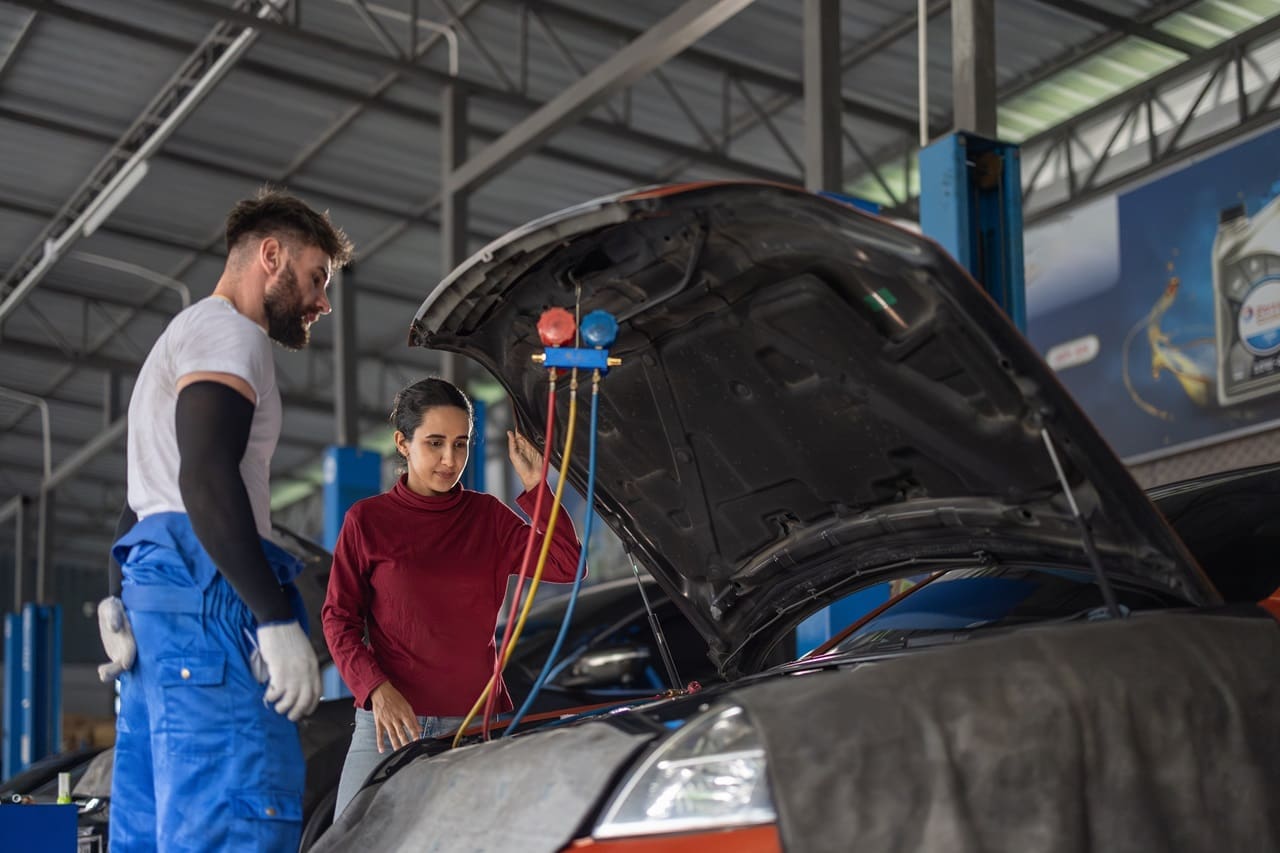If you were to pop open the hood of your car right now, could you name most of the parts on sight? Even though most of us drive or own a car, very few of us can actually explain or identify its different parts and how they work together to keep the car running.
However, understanding these seemingly small parts can help you avoid paying for unnecessary repairs. We’ve picked out 10 parts that you should definitely know about your car to better understand how it operates and to ensure you get the best service if you do happen to need to take it into the shop.
Alternator
When a car starts just fine but then dies during transit, many people assume that there’s something wrong with the battery. This usually isn’t the case. Most of the time, the problem starts with the alternator. The alternator is found near the front of the engine and is driven by the crankshaft via a belt to simultaneously charge the battery and power the electrical system while the engine is running. The most common signs of alternator troubles are strange smells or dim lights.
Axle
The drive axles are the shafts that rotates your wheels. Axles are difficult to break, but overloaded vehicles or severe bumps in the road can eventually cause problems. If your car rumbles or vibrates while driving, or clicks when turning it may be a good idea to have an ASE Certified Technician look to see if the axles are damaged.
Brake Pads
Brake pads apply the pressure needed to stop your vehicle when you step on the brake. Your brake caliper squeezes the pads together on the spinning rotor in order to stop the vehicle. When you consider how many times you stop (not to mention the speeds at which you stop) over the life of your vehicle, it’s not surprising that brake pads accumulate a lot of wear and tear. Noisy, squeaky brakes are typically the first signs that your brake pads need to be replaced.
Catalytic Converter
If your vehicle lacks power, fails an emissions test or experiences a sudden decrease in fuel efficiency, the catalytic converter could be the problem. The catalytic converter is usually located underneath the exhaust manifolds or midway through your car’s exhaust system. Age is typically the most common issue with catalytic converters, although the failure of catalytic converters can often be indicative of a bigger problem that your mechanic should examine.
Clutch
Your clutch controls the transmission of power to your vehicle’s wheels. If you drive a car with a manual transmission (stick shift), then you are probably familiar with the clutch pedal on the far left of the driver’s side. Clutches have friction material similar to brake pads and wear out over times and generally need to be replaced when there is a burning smell, shifting gears becomes difficult or there are abnormal increases in engine RPM without speed during acceleration.
Dipstick
The dipstick is a long, slender rod in your engine that allows you to check your oil level. It usually has an easily identifiable handle that allows you to pull it out and gauge whether you have an excess or low level of oil. It may not be essential to driving, but any driver who wants their vehicle to stay in good shape should know what the dipstick is, and how to locate it properly.
Engine Fan
Also called cooling fans, your engine fan points toward the front of the car to pull air across the radiator and condensor and activates when the coolant temperature exceeds a certain mark. You have to visually inspect your engine fan to tell whether or not it’s working, but doing so is worth your time. Engine fan failure can lead to blown fuses and an overheated car.
Radiator
You generally pour coolant in your vehicle’s radiator. The cap to the radiator is often a large black disk and the radiator itself has the appearance of a metal box with honeycomb-shaped screens on the sides. A car leaking coolant or a vehicle overheating are both common signs of radiator problems.
Shock Absorbers
Your shock absorbers are the metal bars by the wheels that prevent the car from bouncing. If you see springs around the shocks those are called struts, If your vehicle seems to be bouncing a lot, or feels loose and floaty or does a nosedive when you brake, you may need new shocks or struts.
Spark Plug
The location of spark plugs in an engine varies depending on the type of vehicle. Spark plugs are fairly difficult to see due to their location yet, can be the cause of a wide variety of common performance issues along with the ignition coils or spark plug wires. If your car is consuming more fuel than usual, has difficulty starting or idles roughly, you may need to replace the spark plugs.
Transmission
Your engine transmission is what actually applies your vehicle’s power. An automobile either has a manual transmission or an automatic transmission. The transmission ensures that a car operates at its most optimal speed. Any rough or noticeable shift in gears (especially in automatics) is a common sign of transmission issues.
Notice a Problem? We Can Help!
If you’ve spotted a problem with your vehicle, or simply feel uncomfortable exploring underneath the hood by yourself, turn to the auto care specialists Colony One. Between our A+ rating from both the Better Business Bureau (BBB) and the American Automobile Association (AAA), you can rest assured that you’re receiving only the most honest service possible at Colony One. Call, stop by or request a service today.

